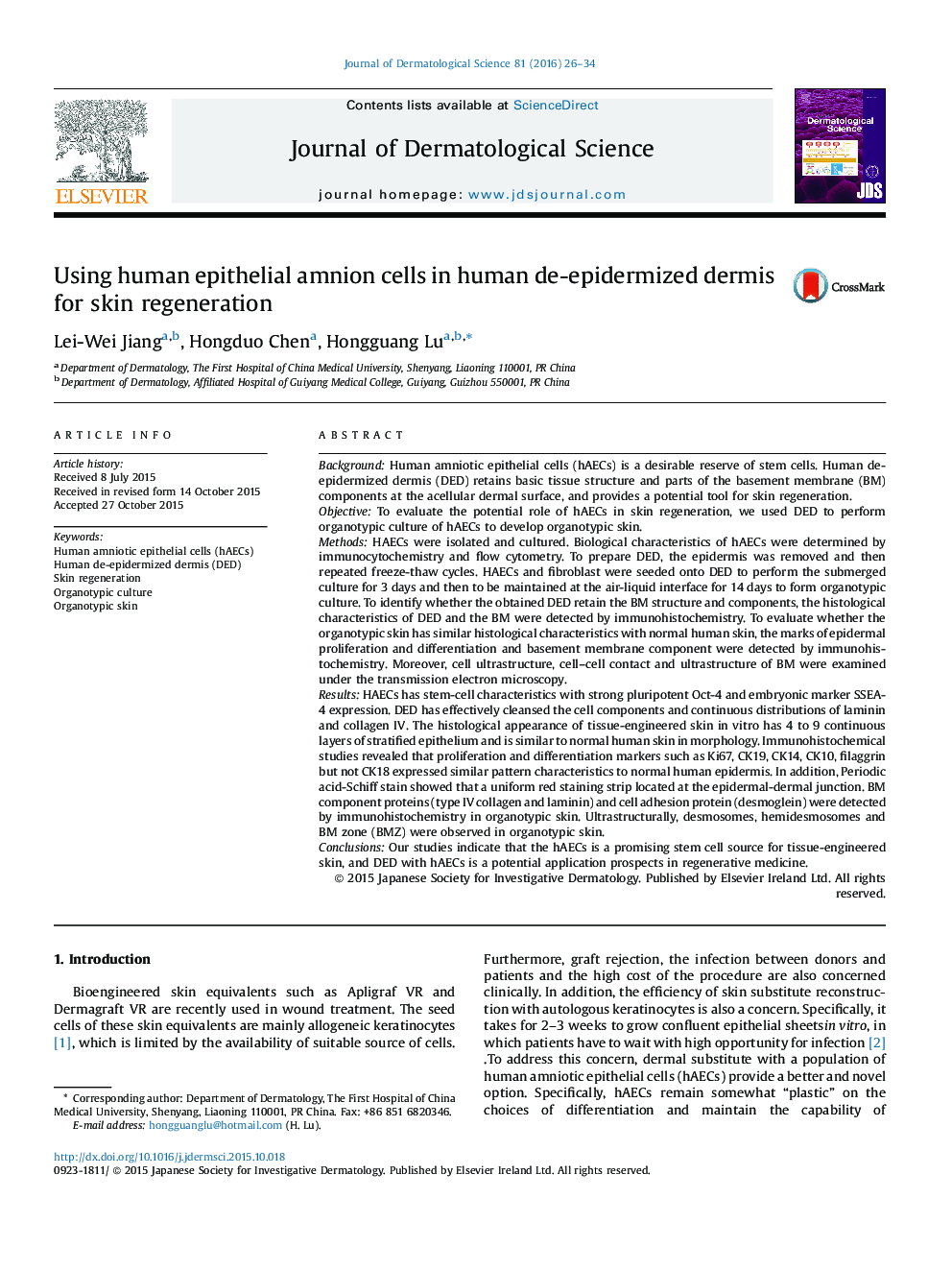| کد مقاله | کد نشریه | سال انتشار | مقاله انگلیسی | نسخه تمام متن |
|---|---|---|---|---|
| 3212546 | 1203182 | 2016 | 9 صفحه PDF | دانلود رایگان |
• Human epithelial amnion cells is an ideal new stem cell source for organotypic skin.
• Human de-epidermized dermis has effectively retained basement membrane components.
• DED represents a suitable acellular carrier in skin tissue engineering.
• Human epithelial amnion cells can differentiate into stratified epithelium on DED.
• We novelly used organotypic hAECs onto the surface of DED to develop skin equivalents.
BackgroundHuman amniotic epithelial cells (hAECs) is a desirable reserve of stem cells. Human de-epidermized dermis (DED) retains basic tissue structure and parts of the basement membrane (BM) components at the acelluIar dermal surface, and provides a potential tool for skin regeneration.ObjectiveTo evaluate the potential role of hAECs in skin regeneration, we used DED to perform organotypic culture of hAECs to develop organotypic skin.MethodsHAECs were isolated and cultured. Biological characteristics of hAECs were determined by immunocytochemistry and flow cytometry. To prepare DED, the epidermis was removed and then repeated freeze-thaw cycles. HAECs and fibroblast were seeded onto DED to perform the submerged culture for 3 days and then to be maintained at the air-liquid interface for 14 days to form organotypic culture. To identify whether the obtained DED retain the BM structure and components, the histological characteristics of DED and the BM were detected by immunohistochemistry. To evaluate whether the organotypic skin has similar histological characteristics with normal human skin, the marks of epidermal proliferation and differentiation and basement membrane component were detected by immunohistochemistry. Moreover, cell ultrastructure, cell–cell contact and ultrastructure of BM were examined under the transmission electron microscopy.ResultsHAECs has stem-cell characteristics with strong pluripotent Oct-4 and embryonic marker SSEA-4 expression. DED has effectively cleansed the cell components and continuous distributions of laminin and collagen IV. The histological appearance of tissue-engineered skin in vitro has 4 to 9 continuous layers of stratified epithelium and is similar to normal human skin in morphology. Immunohistochemical studies revealed that proliferation and differentiation markers such as Ki67, CK19, CK14, CK10, filaggrin but not CK18 expressed similar pattern characteristics to normal human epidermis. In addition, Periodic acid-Schiff stain showed that a uniform red staining strip located at the epidermal-dermal junction. BM component proteins (type IV collagen and laminin) and cell adhesion protein (desmoglein) were detected by immunohistochemistry in organotypic skin. Ultrastructurally, desmosomes, hemidesmosomes and BM zone (BMZ) were observed in organotypic skin.ConclusionsOur studies indicate that the hAECs is a promising stem cell source for tissue-engineered skin, and DED with hAECs is a potential application prospects in regenerative medicine.
Journal: Journal of Dermatological Science - Volume 81, Issue 1, January 2016, Pages 26–34
